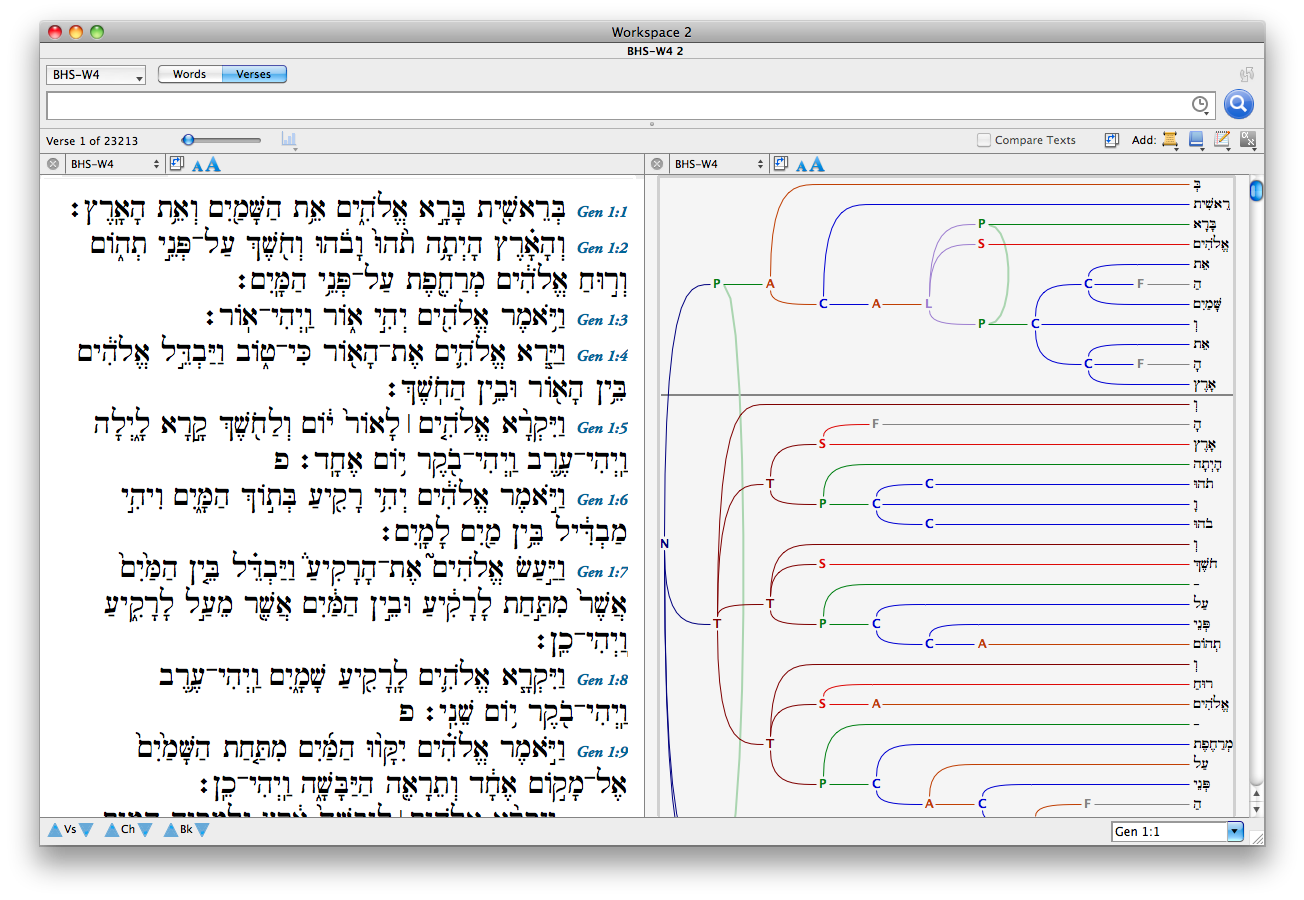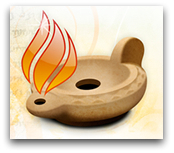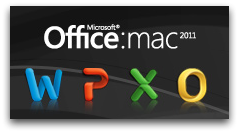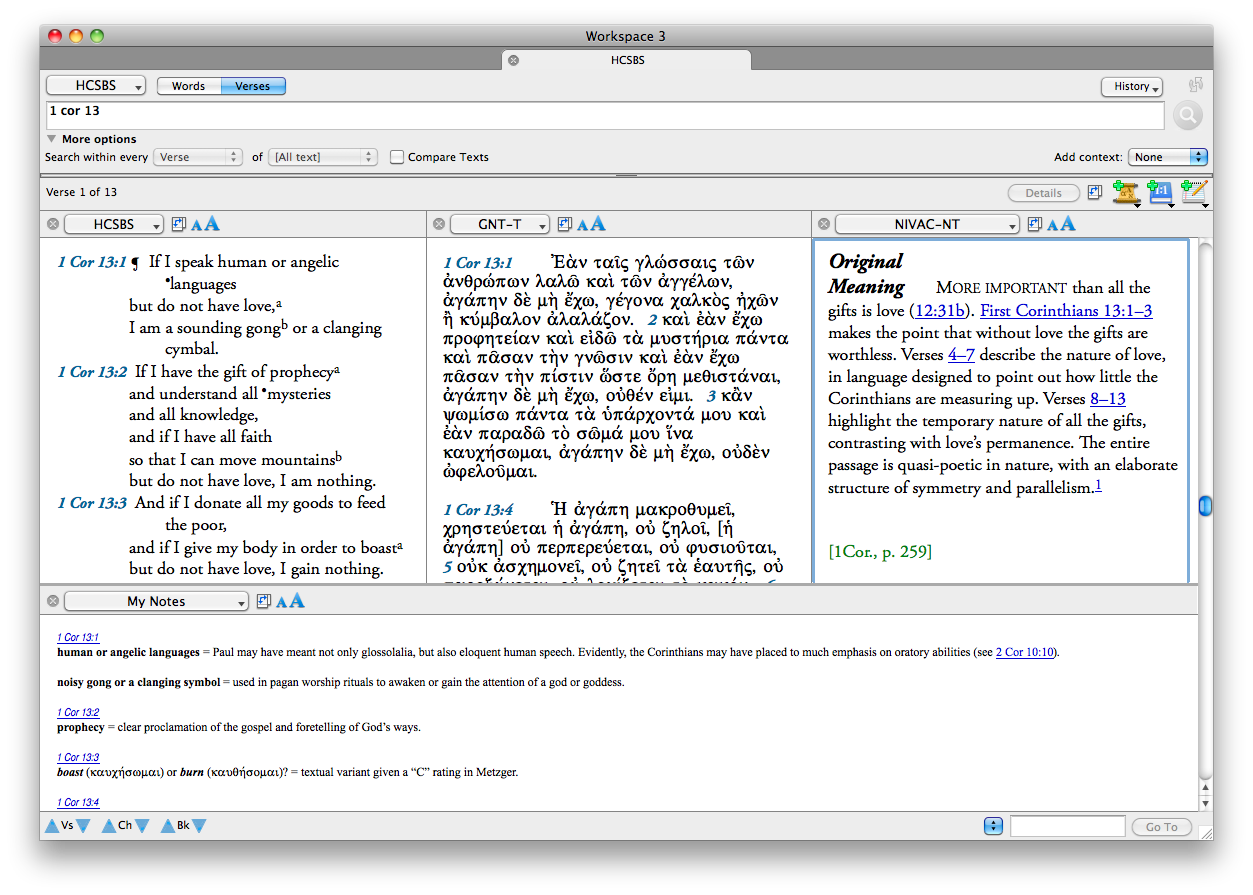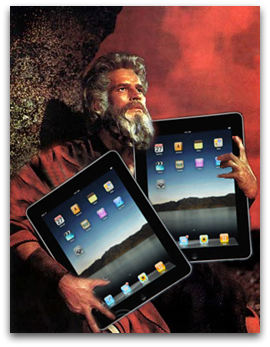Highlights from the 2010 Accordance Users Conference
 Wednesday, September 29, 2010 at 2:15PM
Wednesday, September 29, 2010 at 2:15PM I know that while my posts have been infrequent lately, the most recent entries have primarily related to Accordance in one way or another. I promise that I will add a bit more diversity back to This Lamp very soon. I have a long lists of topics to write about, including a number of long-promised reviews.
 As I write this, I'm sitting in a service center getting an oil change and the tires rotated on my wife's PT Cruiser. We put about 2200 miles on it last week driving from Simpsonville, Kentucky, to Mesquite, Texas, with a couple of brief stops in Louisiana to visit family—and then back! The main purpose of this trip was for me to attend the first-ever Accordance Users Conference, which met from September 24-25.
As I write this, I'm sitting in a service center getting an oil change and the tires rotated on my wife's PT Cruiser. We put about 2200 miles on it last week driving from Simpsonville, Kentucky, to Mesquite, Texas, with a couple of brief stops in Louisiana to visit family—and then back! The main purpose of this trip was for me to attend the first-ever Accordance Users Conference, which met from September 24-25.The Accordance Users Conference was designed to be distinct from the normal training seminar (of which I've led three or four myself in the past). While attendees could certainly learn to use Accordance better as in a training seminar, the Users Conference was chance to see a variety of specialized presentations on numerous topics. The timing of the conference also coincided with the release of Accordance version 9, and the upcoming iOS version of Accordance which was publicly demonstrated for the first time.
Two scheduled speakers were unable to attend. Martin Abegg had a family emergency, and Joe Weaks was ill. Abegg had been scheduled to deliver an address on the Dead Sea Scrolls. Roy Brown, the creator of Accordance and president of Oak Tree Software, filled in for him adapting a presentation he had previously presented on the subject in Israel.
Is Accordance for Academics Only?
Most of the time, attendees had a choice between "heavy" and "light" sessions—or technical and non-technical or requiring biblical languages and not requiring biblical languages.
I tended to gravitate to the so-called "heavy" sessions, but I have to admit that this was partly because I was also in the back grading papers and there was more room for this in the larger room. One supposedly "lighter" session I did attend was David Lang's "Sermon Prep Workshop." It was not that I thought Greg Ward couldn't teach me anything new in his concurrent "Original Languages Workshop," but I was more intrigued to see what David would present.
Here's why: often I hear a bit of faulty wisdom out there saying that Accordance is better for academics while Logos is better for pastors. The truth is neither of these assertions is valid. Logos can be used for academic biblical study and pastors can use Accordance for sermon prep. And people do both with each platform every day.
David, admitting he doesn't preach sermons every week, chose to create a conversation with people in the session—most of whom were pastors—regarding how they use Accordance in their preparation. Lots of good ideas were shared. This led me to an idea for a similar session that perhaps the organizers could implement for next year's conference.
I know from the Accordance training sessions I've led as well as from the Accordance forums that many pastors use Accordance intensively in their sermon preparation. I believe it would be a great idea to bring in a pastor for next year's conference who is both an experienced Accordance user as well as a seasoned preacher to demonstrate his actual sermon preparation workflow to attendees interested in the subject. Something like "Using Accordance for Sermon Preparation: 7 Basic Steps" or something similar might be helpful for those who preach regularly.
Daniel Wallace and the Center for the Study of New Testament Manuscripts
On the evening of the first day of the conference, Daniel Wallace gave us a presentation relating to his work with The Center for the Study of New Testament Manuscripts. Wallace and his team have been traveling the globe making high resolution photos of priceless, ancient manuscripts before they are lost to history due to age and deterioration. Using high res photography and, in some cases, ultraviolet imagery, the team has been able to create better images and see text more clearly than ever before. The detail in the images Wallace showed us was truly remarkable. And the high res photographs are going to be invaluable for text criticism over the old microfilms that were the only resources some scholars have had to work with. Moreover, in the process of photographing known manuscripts, the CSNTM team has discovered over 70 previously uncatalogued New Testament manuscripts in the last 8 years.
As an aside, this work is fairly expensive. The cost to preserve one page of a unique, handwritten page of the New Testament is $4. The average cost of one NT manuscript is $2200. The CSNTM is a worthy cause for your donations regardless of your theological leanings or background.
In conjunction with Dr. Wallace's presentation, Roy Brown announced that there is currently in the works a project to bring many of the high resolution images taken by CSNTM to Accordance, much as has already been done with the Dead Sea Scrolls Images module. I got a sneak peak at the Sinaiticus images that will be made available. Between that and other tools already available such as the digitized Codex Sinaiticus modulealready available, Accordance users are increasingly able to do their very own textual criticism beyond the resources text critics had available a century ago.
A History Lesson
At the beginning of the second day of the conference, David Lang presented attendees with "A Brief History of Accordance." This was a fascinating session for anyone such as myself who enjoys history of technology, but it was also interesting to hear the history of Accordance development from much of the early "wild west days" which led up to the sophisticated features we have in v. 9 today. I've been using Accordance since version 3.5 (I think) in 1998, but I didn't know all of the background stories.
David is a master presenter who knows Accordance and its history, perhaps only second to Roy Brown himself, but sadly, the brief history was simply too brief. Thirty minutes turned out to be too short of time for this subject, especially with audience comments and question. For next year, I recommend giving this subject a full hour, perhaps titled "A Not So Brief History of Accordance"—and with more screenshots from the early versions, too!
It's a Mobile World
 Much of Saturday's emphasis centered on Bible software in the mobile space. Scott Knapp, Oak Tree's primary iOS developer, gave the first ever public demo of Accordance for iOS. Participants were given a look at an early beta and feedback was invited. When the final product is released this Fall, it will be a universal app (meaning it will be optimized for both the iPhone/iPod Touch and the iPad).
Much of Saturday's emphasis centered on Bible software in the mobile space. Scott Knapp, Oak Tree's primary iOS developer, gave the first ever public demo of Accordance for iOS. Participants were given a look at an early beta and feedback was invited. When the final product is released this Fall, it will be a universal app (meaning it will be optimized for both the iPhone/iPod Touch and the iPad).As an unexpected bonus, Scott announced that all attendees at the Accordance Users Conference would become part of the beta program. And before you ask (because others began asking immediately after I mentioned this on Twitter last Saturday), no, being at the conference in spirit doesn't count. :-)
Accordance was not the only Bible software with a presence at the conference. Drew Haninger, CEO of OliveTree Bible Software, joined us for a panel discussion I chaired on "The Impact and Future of Mobile Bible Software." This was a "big picture" discussion on the history and current state of mobile Bible software as well as projections for what the future might hold. Although our discussion focused primarily on Apple's iOS, we also referred to Android and Kindle, among others, a number of times, too.
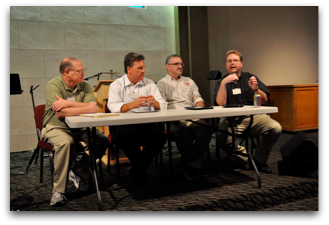 From left to right: Drew Haninger (OliveTree), Scott Knapp (Accordance), Mark Allison (Accordance), Rick Mansfield (Me)
From left to right: Drew Haninger (OliveTree), Scott Knapp (Accordance), Mark Allison (Accordance), Rick Mansfield (Me)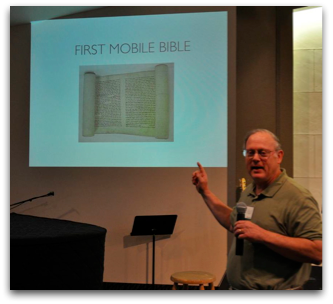 Olive Tree's Drew Haninger shows us the "first" mobile Bible.
Olive Tree's Drew Haninger shows us the "first" mobile Bible.The panel discussion on mobile Bible technology was very enjoyable to participate in. Certainly, this is where the focus of my technology interests currently lie. In fact, I originally considered showing up at the conference with only my iPad in hand, but the fact that I needed to grade papers (which I cannot currently do on the iPad) and with the release of Accordance v. 9, I lugged my MacBook Pro along, too. Nevertheless, I suggested to Drew that we ought to consider a mobile Bible technology podcast because there is certainly lots still to discuss.
Also, for those of you who know what I'm talking about, Drew showed me a very quick look at "Project Glacier." I'd like to tell you more, but I'd have to kill you afterwards. But just be patient—it looks awesome.
Syntax Rules!
Admittedly, Accordance was not the first Bible software program to the table with syntax tagging, as many will acknowledge the extremely interpretive nature of assigning syntax to words and phrases in a biblical text. Nevertheless, since users kept asking for it, Oak Tree recently made available the beginnings of its syntax modules for both the Greek New Testament and Hebrew Bible with the promise (specifically made at the conference) of more to come. To see screenshots of Accordance syntax in action, see my previous post.
Robert Holmstedt delivered a paper, "Understanding and Using the New Syntax Searching Capabilities in Accordance 9" which offered a detailed look at both the philosophy behind Accordance's approach to syntax as well as practical and even very specific searches that can be performed. A copy of the paper can be downloaded from Holmstedt's public dropbox folder (if that link becomes broken in the future, let me know).
Wrap-Up
Besides the mobile technology panel, I also participated in the final session, "Ask the Accordance Experts," which was supposed to help round out any remaining "how to" questions regarding Accordance. I was very flattered to be the only non-company (although I have done contract work for Oak Tree in the past) member of the panel. Unfortunately, almost immediately the discussion became a forum for some attendees to voice suggestions (or complaints) about various elements in the user interface. While the Oak Tree employees surely appreciated the suggestions, this was not the actual intended focus of the session, and as one idea spurred another, we never fully got back on track. Thus, I had little to offer in this session. Perhaps next year, a separate session could be offered—perhaps on day one—for suggestions and feature requests. These are certainly important, but I imagine a number of users could have better benefitted from the final session if it had proceeded as originally intended.
The Accordance Users Conference seemed from my perspective—as someone who is both a user and a "sometimes" insider—to be a great success. The sessions were diverse and targeted every skill level. An untold number of fascinating conversations took place both during and in between sessions. It was great to meet many folks in person whom I'd only corresponded with online before.
I hope that this becomes an annual, or at least a regular event. When the next one is announced, I strongly encourage you to make plans to be there. It was truly an experience that cannot be simulated by the internet or even at one of the Accordance training conferences (as these are different in purpose) held throughout the year.
One more thing: A number of people have asked me if the sessions were recorded. I don't know the answer to that, but if I find out, I'll post information here.
Update: David Lang has written "Reflections on the Users' Conference" which you should read, too. Although note that he adds a possessive apostrophe to Users which I don't for the same reason I don't add an apostrophe to Mens Room Boys Choir [edit: better example]. ;-)
 Accordance,
Accordance,  BibleReader,
BibleReader,  CSNTM,
CSNTM,  Logos,
Logos,  Mac,
Mac,  OliveTree,
OliveTree,  iOS,
iOS,  iPad,
iPad,  iPhone in
iPhone in  Faith & Reason,
Faith & Reason,  Technology
Technology 




